Life lessons from mountaineer Nirmal Purja, of Netflix’s 14 Peaks fame
As we roll into 2022, take heed from Nirmal Purja, who ascended the world’s 14 peaks higher than 8,000m in a record time of seven months, and who believes that nothing is impossible.
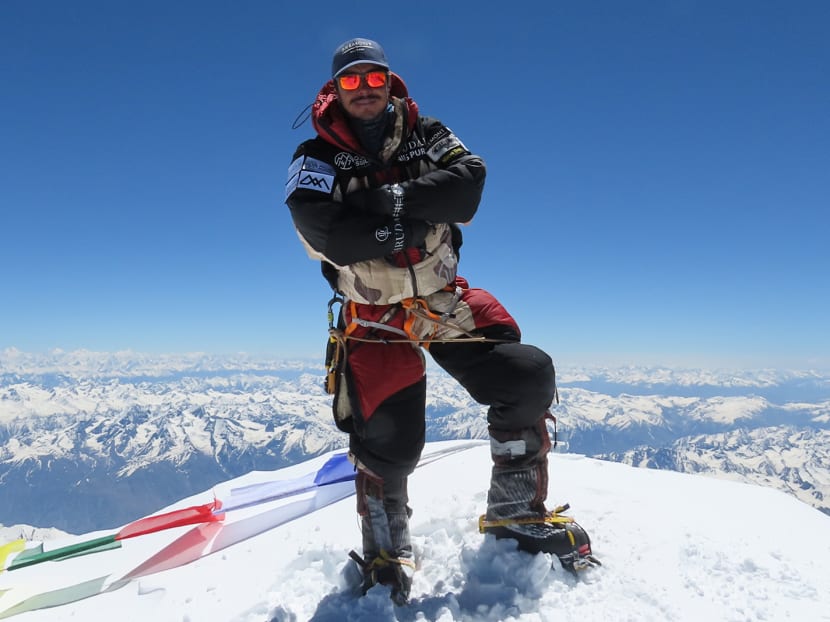
Nirmal Purja is the protagonist of Netflix's 14 Peaks: Nothing Is Impossible. (Photo: Netflix)
At a table amid the clouds, I am waiting for a Boys’ Own hero. Nirmal “Nims” Purja is a former special forces soldier, a veteran of numerous gun battles, a man equally at home parachuting, skiing or diving. Since leaving the military in 2019, he has blazed a trail across the world’s highest peaks that has left even the toughest mountaineers slack-jawed.
First he climbed all the world’s 8,000m mountains, cutting the previous record from more than seven years to less than seven months. Then, at the start of this year, he notched up the first winter ascent of K2, the “savage mountain”, a feat that had resisted multiple attempts over 33 years. Despite winds of 75mph and temperatures of minus 60ºC, he did it on the first try, without bothering to use bottled oxygen.
It is, to be frank, all enough to inspire a certain sense of male inadequacy, especially given I have put my back out and a couple of hours earlier was struggling to pull up my own socks. Purja arrives bang on time, dressed all in black, offering a firm handshake. I rise to greet him, standing awkwardly. “What have you done, brother?” he asks with concern. He was medically trained in the military and was a specialist at evacuating battlefield casualties. It was, I confess, an injury sustained while hoovering.
Purja, by contrast, is on fine form. A week earlier the 38-year-old had been on the summit of Ama Dablam, the so-called Matterhorn of the Himalayas, a 6,812m peak in the shadow of Everest. He sprinted down to base camp, helicoptered to Kathmandu and flew on to New York for the premiere of his movie, 14 Peaks: Nothing Is Impossible. At 6am this morning he landed back at Heathrow and now we are meeting at Sushi Samba, London’s highest restaurant, on the 39th floor of the Salesforce Tower. Rather than the snowy Himalayas, we look across at the peaks of 30 St Mary Axe and 22 Bishopsgate, the deep valleys of Houndsditch and Commercial Road. We start with a glass of champagne.
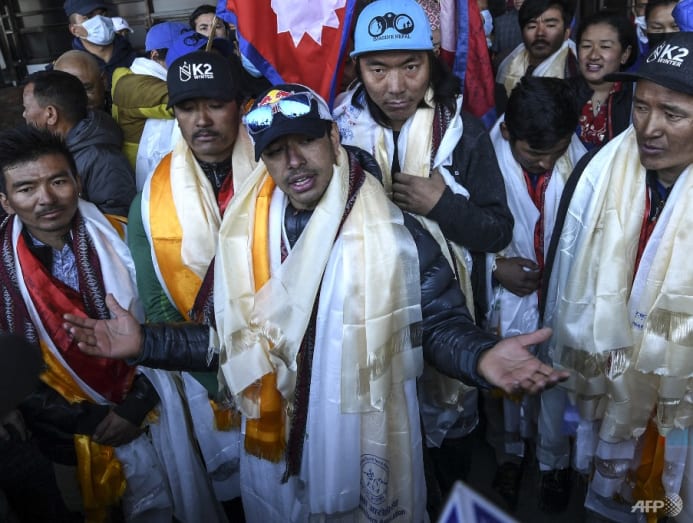
I ask if he was pleased with the premiere. “Man, I must have cried five or six times,” he replied, instantly dispelling fears he will conform to the granite-hearted, stiff-upper-lipped special forces stereotype. In fact, it’s soon clear Purja is anything but buttoned up – his enthusiasm pours out, my transcription app totally unable to keep up. There is, it has to be said, a certain level of bravado: During our lunch he will describe himself as “the real James Bond”, talk about his mission to “inspire the world”, and pull back his T-shirt (branded with his own logo) to show off the size of his biceps.
The film tells the story of Purja’s “Project Possible”, his lightning-fast ascent of the world’s 14 peaks higher than 8,000m. Typically climbing just one of these giants would involve a two-month expedition; to do them all within seven months is “a unique statement in the history of mountaineering”, said Reinhold Messner, the godfather of high-altitude climbing and the first man to reach the summit of all the eight-thousanders. It is a thrilling story but only part of a perhaps more remarkable journey, from poverty in the remote village of Dana, central Nepal, to being feted at a New York premiere.
“We used to live in this little house where the whole of the upper floor was used for chickens,” said Purja. “It was four days’ walk to the nearest road.” When he was five the family relocated to Chitwan in the country’s tropical south, far from any mountains. “I was running ahead of the others and when we reached the road I saw a truck for the first time. I ran back along the path shouting: ‘Mum, a house is moving! It’s coming towards us!’”
Purja’s father and two of his older brothers were in the Gurkhas, the British Army unit made up of Nepali soldiers, and his only goal growing up was to follow them. In 2002, he passed the extensive selection tests, which include running through the Himalayan foothills carrying a wicker basket full of sand, and he moved to the UK the following year, aged 20.
“I cannot be Albert Einstein or Usain Bolt but they cannot be me. In my field where I am the strongest, I wanted to completely shatter the record and show what was possible for humanity.” – Nirmal Purja
At a time when other elite sportsmen would have been honing their skills and being coached to maximise their potential, Purja was at the army’s Infantry Training Centre in Catterick, Yorkshire, struggling to get used to the wind and rain and battling to understand the British recruits’ Geordie, Scouse and Cockney accents. After that, a training course with the Gurkha Engineers saw him spend nine months in Chatham, Kent, learning to be a plasterer.
It wasn’t until he was 29 that mountains entered his life. By then he had passed another intense selection process to progress into the elite Special Boat Service – the first Gurkha to do so – and, with a couple of weeks’ leave in hand, he arranged a trek to Everest base camp. This seminal step was motivated not by the need to answer some deep inner calling but by a slight sense of embarrassment. “When you say you are from Nepal, people always ask you if you’ve seen Everest. And I had to say no. I felt like I had to go and do this, just for my sanity.”
The trek was a revelation. “On the trail from Namche Bazaar, you come up and you see this big mountain, Ama Dablam. Wow! I just started thinking, what would it feel like to be on the top of that mountain? What would you be able to see?” He persuaded his guide to take him up a relatively straightforward nearby peak; by the time he was at the summit a whole different set of possibilities had come into view.
From then on, he grabbed mountaineering opportunities both in the military and whenever he had leave. Only 18 months after that first climb, he reached the summit of Dhaulagiri, the world’s seventh-highest peak. Two years later he was given an extra week’s holiday ahead of being sent back for another tour in Afghanistan, so he cancelled the planned Mediterranean beach trip with his wife, took out a £15,000 (S$27,700) loan, pretending it was for a car, and set off to climb Everest solo. “To be honest, I really can’t lie on the beach for more than an hour.”
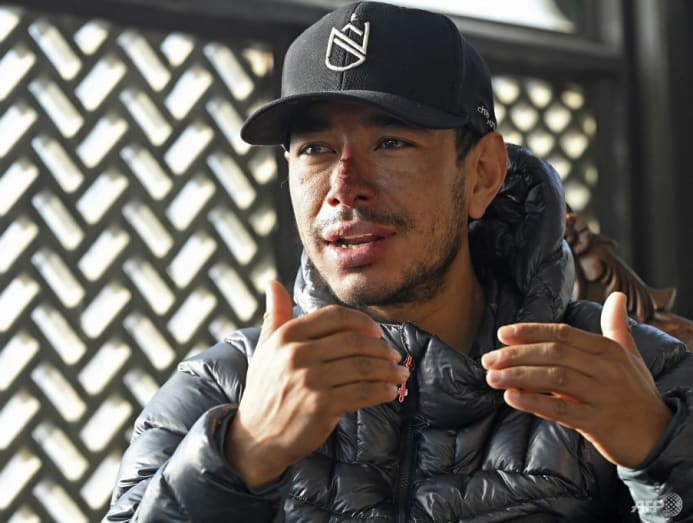
The more he climbed, the more he began to recognise his talent for acclimatisation, his “superpower” at high altitude – all the more surprising because he is not a Sherpa, the ethnic group long adapted to their lofty Himalayan homelands. Often he would break trail through deep snow, only to have to wait for the team in his wake to catch up. He came up with the idea for Project Possible, and in 2019 he quit the army to pursue it (forgoing the pension that was six years away, and declining an offer from the SAS of a three-rank promotion and abundant time off to climb if he stayed).
Even now he speaks about the decision with a zeal he can’t disguise: “I cannot be Albert Einstein or Usain Bolt but they cannot be me. In my field where I am the strongest, I wanted to completely shatter the record and show what was possible for humanity.” His elder brother thought it so reckless they didn’t speak for three months.
We order from the Japanese-South American fusion menu: Wagyu gyoza, neo Tokyo samba rolls and tuna nigiri. Purja seems little interested in the food – “I eat absolutely anything” – but does accept the waiter’s offer of more champagne.
Though he didn’t drink at all until the celebration marking his selection for the SBS, aged 26, he sometimes seems to be making up for lost time. Having climbed Annapurna and Dhaulagiri, the first two summits on the Project Possible challenge, Purja and his team of Sherpas returned to Kathmandu, partied all night and then at dawn flew by helicopter to the base camp of Kanchenjunga, their next target.
Climbers typically spend the night at four camps on Kanchenjunga before finally making a summit bid. Purja and team ate breakfast at base camp then set off straight for the top. “For Nims to climb Kanchenjunga in a single push from base camp to the summit . . . while hungover?” said Jimmy Chin, the celebrated American climber. “I don’t know what to think of that. It is completely absurd.”
Purja can make Himalayan climbing look easy but three climbers from other expeditions died on Kanchenjunga that night (Purja gave his own oxygen to one of them at 8,450m and later helped another stricken climber to safety). Climbing Lhotse soon afterwards he passed another three frozen corpses.
Purja says he never fears death while climbing, his attitude to risk presumably affected by years spent in war zones. On one mission in Afghanistan, he was lying prone on a rooftop when he was shot and thrown to the ground. A sniper had been aiming for his neck, but the bullet struck the butt of his gun instead. “A couple of centimetres either way and I would have been dead.” Did he take a while to recover? “Nah, I just kept fighting.” The mountains might be dangerous but at least no one is trying to shoot you.
In fact, his nadir came soon after returning to civilian life, ground down by the pressure of commuting between his home in Hampshire and London for a series of fruitless fundraising meetings as he tried to get Project Possible off the ground. The stress left him with headaches and an involuntary eye twitch. “Then I was on the M3 and there were all these tears in my eyes,” he said. “When you are trying so hard and nothing is happening, that is tough. I had to come off the road to compose myself.”
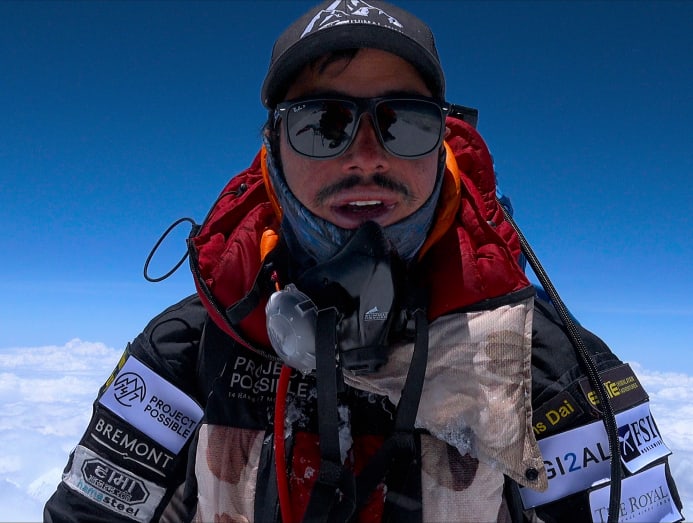
In the end, he had to remortgage the house, even then setting off with only 15 per cent of the budget he needed. Sponsors thought the project too far-fetched, likely to end in failure or Purja’s own death. Speaking to reporters at Kathmandu airport after completing the challenge, he was clear about another reason for what he saw as a lack of traction: “Let’s be honest, if this had been done by a European or western climber, the news would have been 10 times bigger.”
Shadows of colonialism have long lingered over Himalayan climbing, with foreigners becoming famous while their Nepali helpers were overlooked. “Since the start we have always been the strongest, you know, but we never got the right credit.”
Part of his mission has been to promote Nepali climbers as athletes in their own right, a point underlined by the winter ascent of K2 in January 2021. Having arrived on the mountain as part of three separate expedition teams, Purja and nine Sherpa climbers joined forces and pushed for the summit together. A video widely shared on social media shows them holding hands, singing the Nepali national anthem and stepping on to the summit together, as the sun sets over the Karakorum behind them.
Whether it is the effect of the 39-storey altitude, my painkillers or his jet lag, there is a notable bonhomie in the air as we drain our second glasses of Taittinger. Purja pauses frequently to fist bump or high five, always calling me “brother” and laughing a lot. On Instagram, his constant positivity – “Always believe you can make a difference!” – can come across as swagger, especially given it is often illustrated with buff selfies. In person, the flood of enthusiasm is clearly genuine, and it is boyish and endearing. I feel my cynicism evaporating.
“I’m sick of people saying things are impossible.” – Nirmal Purja
There’s also a certain vulnerability. Often he insists he doesn’t “have to prove anything to anyone” but it’s hard not to see that as at least one spur for his intense drive. He can’t resist telling me he came top in his plastering course.
Several times he returns unprompted to his critics. Some belittled his speed record because he was using oxygen, a team of Sherpas and helicopters to hurry between base camps. Several older mountaineers suggested that he would be better off using his talents to find new lines up unclimbed mountains rather than racing the clock on the standard routes. A photo he took showing crowds queueing on Everest’s Hillary Step made front pages around the world and prompted some to decry commercialisation and overtourism on the roof of the world.
“There’s something human about trying to make yourself look good by making others look bad,” he said. “You’re sat here in your nice comfortable house and you are criticising those who are actually going out there on the highest peaks and doing it?”
Perhaps the sniping is inevitable given how much he has disrupted the norms of the mountaineering world. Climbers who had previously based entire books and speaking tours on successfully climbing one 8,000m peak will surely now find their achievements harder to market. “That’s why they all hate me!” he said, laughing.
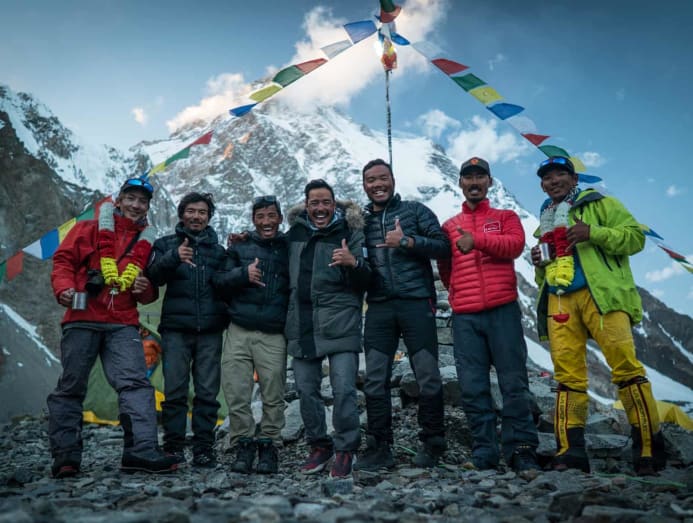
Purja certainly doesn’t look like the traditional mountaineer of past decades. He is rarely seen without a baseball cap and markets his own range of T-shirts and hoodies, some with his motivational catchphrases: “Giving up is not in the blood!” His back is covered with a huge tattoo showing Himalayan peaks. At one point in his movie he is seen out at sea at dawn, butterflying powerfully through the waves towards Durdle Door in Dorset, and inexplicably naked.
The action-man persona might be anathema to climbing’s more reticent, cerebral souls but, in terms of reaching and inspiring a new and more global audience, it works. On Instagram, he has 1.5 million followers (Messner himself has only 137,000).
The film is likely to propel him to more mainstream celebrity. He has major sponsors and numerous corporate speaking requests but for the time being his focus is on developing his own guiding company, Elite Expeditions. Purja is now a British citizen but is rarely in Hampshire; he’ll spend far more of 2022 guiding in Nepal and Pakistan, the Caucasus and South America.
In some ways the company is also ripping up the rule book, challenging the orthodoxy that clients must earn their dues on easier, lower peaks before graduating to loftier challenges. “On Ama Dablam last week, we had these three models who were just going to trek to base camp but then said ‘Nims, we want to climb.’” The women were fit but had little mountaineering experience. “Who am I to say they can’t? I’m sick of people saying things are impossible. I gave them mission-specific training and they all summited.”
Our meal is drawing to an end. A car is waiting at the bottom of the express lift to take him to a couple of appointments before a screening of his movie tonight. There will be another premiere in Kathmandu and by Monday he will be in Antarctica, guiding clients on Mount Vinson. I pause to pay the bill and to take in the view from the heights for just a little longer. Perhaps, if the models can do it, it’s not too late for me to fulfil fantasies of climbing something big in the Himalayas? Then I rise, wince, and remember I have an appointment with the chiropractor.
By Tom Robbins © 2021 The Financial Times











